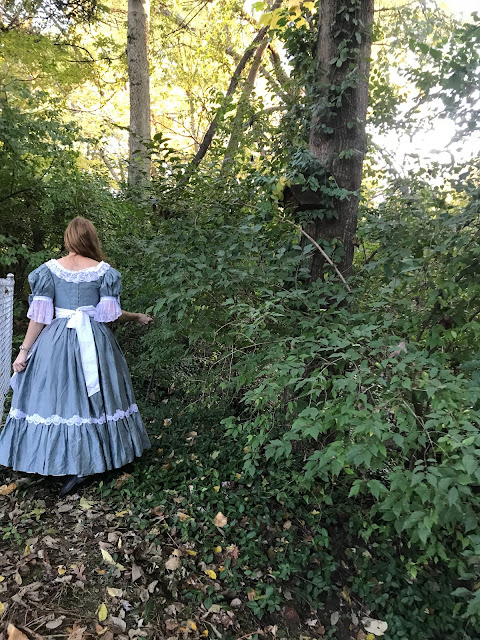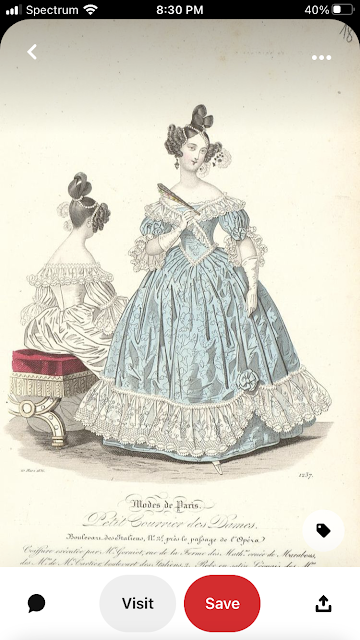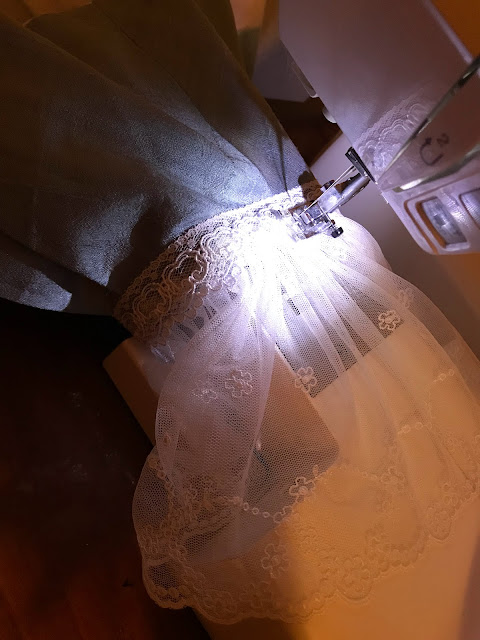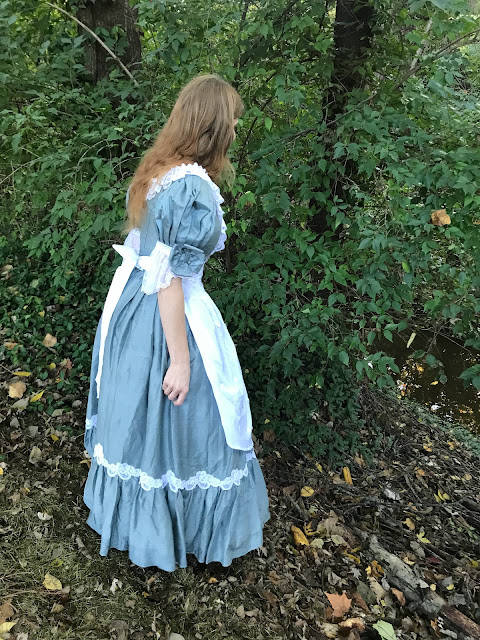A few years back, Chalk and Notch patterns came out with the Joy Jacket pattern. When they first announced the design, it caught my eye and I applied to test it. I did not get accepted as a tester at that time, which really isn't a surprise seeing as the original Chalk and Notch size chart didn't really suit my body type. It was drafted for a B cup in the bust, and my bust is decidedly not a B. My bust measured a good 2 sizes larger than my waist and hips according to the size chart. This meant I'd have to make some significant pattern alterations to get a decent fit, which wouldn't be great for a pattern test where one of the goals is to test and see if the pattern properly fits the size it is meant to fit.
That said, I still really liked the design of the Joy Jacket, and have admired the many different versions of it I've seen come across Instagram since the initial pattern release.
Since that initial pattern release, Chalk and Notch has decided to extend and update their size range in more ways than one. First, they added a few more sizes so their patterns now fit up to a 58" bust and a 59" hip. Second, they added a second bust cup option to accommodate those of us whose bust can't, won't, will not, be able to squeeze into anything remotely resembling a B cup.
On the new size chart my measurements all fit beautifully into one size with the new C/D cup option!
Since expanding the size chart, the pattern company has been updating all their old patterns so all the patterns are available in all the sizes. A few weeks back, I saw that the Joy Jacket update was ready to be tested, and I decided to apply to help out with that.
Chalk and Notch patterns attract a lot of applicants for testing, so I didn't really expect to be chosen, but hey, it didn't take that long to fill out the application, so I might as well try! My measurements put me perfectly in the size 6 with a C/D cup, so maybe, just maybe, there wouldn't be a whole lot of applicants with those exact measurements so they could use my help?
A few days later, I got an email saying I'd been chosen as a pattern tester. This honestly surprised me. And I slightly freaked out. My fabric stash currently resides about 2 hours away from me in my parents' basement. And I wouldn't be going back to visit before the pattern test started. So what was I going to make this jacket out of?!?! I had no suitable fabrics stashed away in any corners of the apartment!
This pattern is designed for medium-weight woven fabrics with a lot of drape in them. Nothing too stiff or heavy. Tensel twill is the fabric of choice.
I went to Joann's to scout out their fabric options, and discovered that they did indeed have a bolt of Tensel twill on their shelves. It was black? dark gray? A color I don't usually gravitate towards, and it was $30 a yard. This was more than I wanted to spend, especially for a color I wasn't particularly excited about.
So, I left Joann's that day with some plaid flannel for the lining of my jacket, some flannel-backed satin for the sleeve linings, and an idea of what Tensel twill felt like, and how it draped, so I could search out a less expensive, and hopefully more colorful, alternative.
Honestly, the Tensel twill had a very similar hand and drape to the light and mid-weight worsted wool twills I've handled. Back in my parents' basement I have a rather large stash of wool, and I could immediately think of several pieces which would be suitable for this jacket. However, as afore mentioned, I would not have access to that beautiful fabric stash in time to make this jacket for the test. I would need to find another way to procure the proper material.
I went to that local sewing room I've mentioned a few times, the one that sells donated fabric for $1 a pound, and searched their shelves for something, anything, of the correct weight and drape, with enough yardage (2.5 yards, 60" wide), in a color I liked.
It took some looking, but I eventually settled on something that would do. 3 yards of cobalt blue worsted wool twill came home with me. The color was not my first choice (I don't think I have anything else in my wardrobe in this shade!), but the drape was right, the weight was right, the yardage was good, the price couldn't be beat, and the color would grow on me.
I went home, printed out the pattern that had been sent to me for testing, assembled it with the overly energetic help of my kittens, and got to work.
In a couple days, I had a new jacket. One that looked absolutely fantastic!
The more I worked with it, the more I liked the color of my fabric.
The pattern itself is very well drafted. It features separate pattern pieces for lining and the shell, which allows for a much nicer, better fitting, more comfortable finished garment than one using the same pattern pieces for both the inner and outer layers would have been.
Interfacing is used liberally throughout the design, which really helps to get a nice clean finish with pretty crisp edges.
If you follow the instructions you just can't help but to have a very nice, professional looking, finished garment in the end!
To add my own twist to the finished jacket, I decided to use petersham ribbon for my drawstring. It, the metal zipper, and the grommets, all came out of my stash. (I've managed to fit most of my notions stash into a closet in our apartment, it's only my fabric that I'm separated from.) The zipper is actually a couple inches shorter than in should be, but it's what I had on hand and it works well enough.
Despite my separation from my fabric stash, and my initial anxiety over where I would acquire a suitable fabric for this project, the pattern test was a very pleasant experience overall. Chalk and Notch pattern tests are very well organized, with clear communication and expectations, which isn't something I can say for all of the pattern companies I've tested for.
The finished jacket is great! The fit is spot on (All I had to do is lengthen the sleeves 1", which is a very common adjustment for me.), and I've worn my jacket almost daily since finishing it!
Thank you Chalk and Notch for expanding your size range to better fit more of us, and thank you for including me in your pattern test!
With the Joy Jacket update done, all the patterns now feature the full size range! In addition, the entire Chalk and Notch catalogue is on sale through November 30th, so if you'd like to add this pattern to your stash, now is the time to do it!
Chalk and Notch Holiday Sale 2021 coupon codes
All patterns, PDF & Printed, are on sale through Nov 30th!
hol20 for 20% off any purchase⠀
hol25 for 25% off when you spend $25
hol30 for 30% off when you spend $50
Free shipping and gift with any order of printed patterns
*I received this pattern for free in exchange for testing it out, but all thoughts and options here are my own. I was not required to write this blog post in any way, shape, or form.




















































